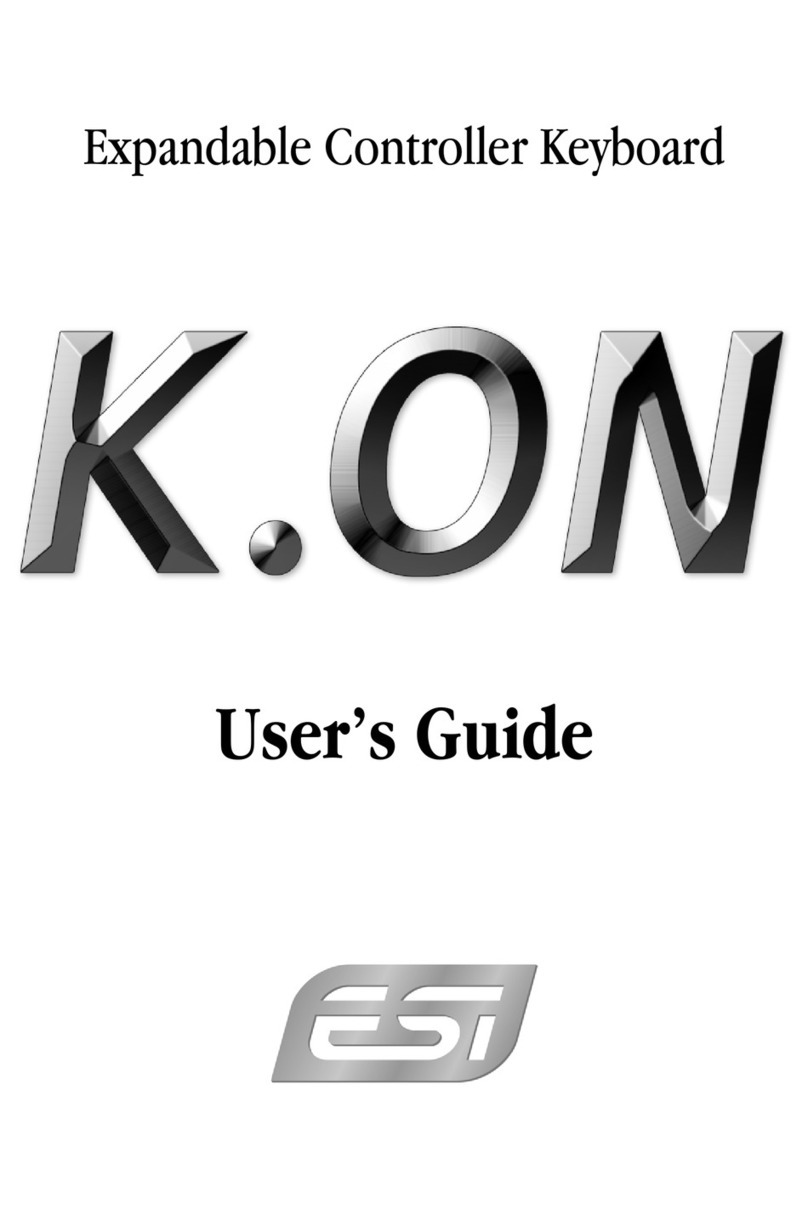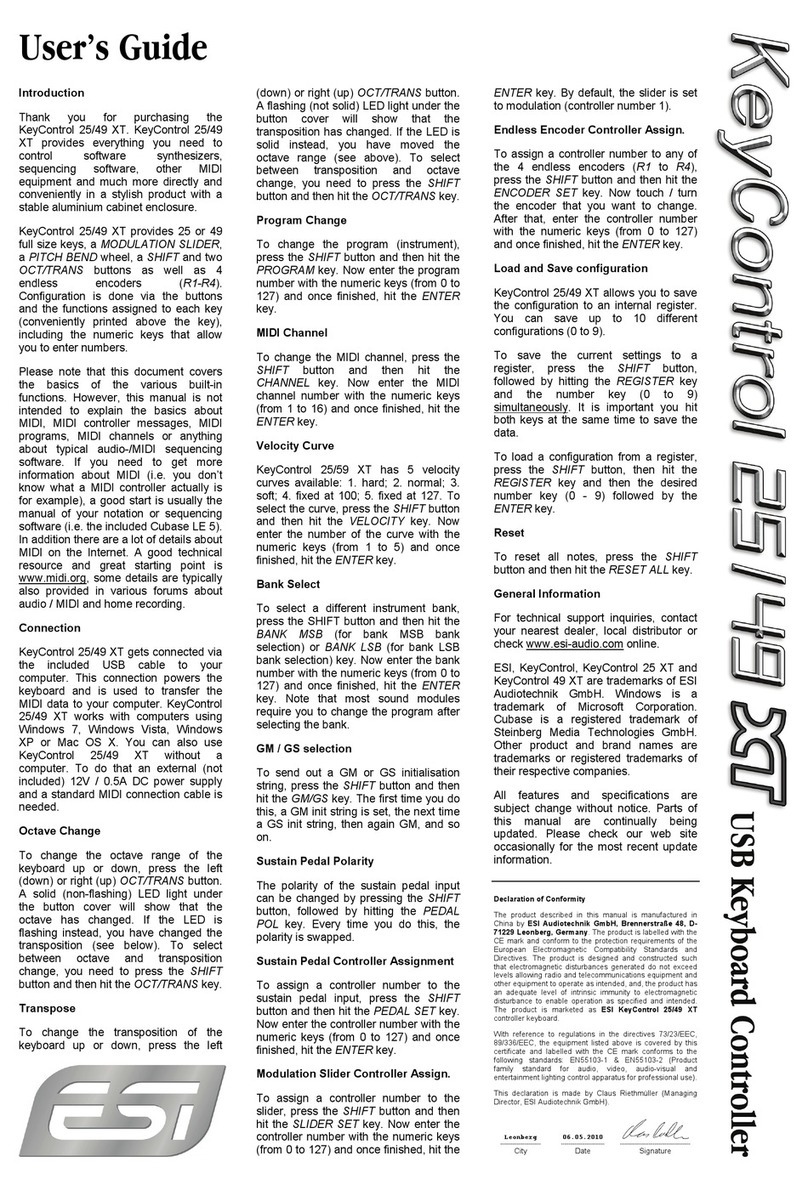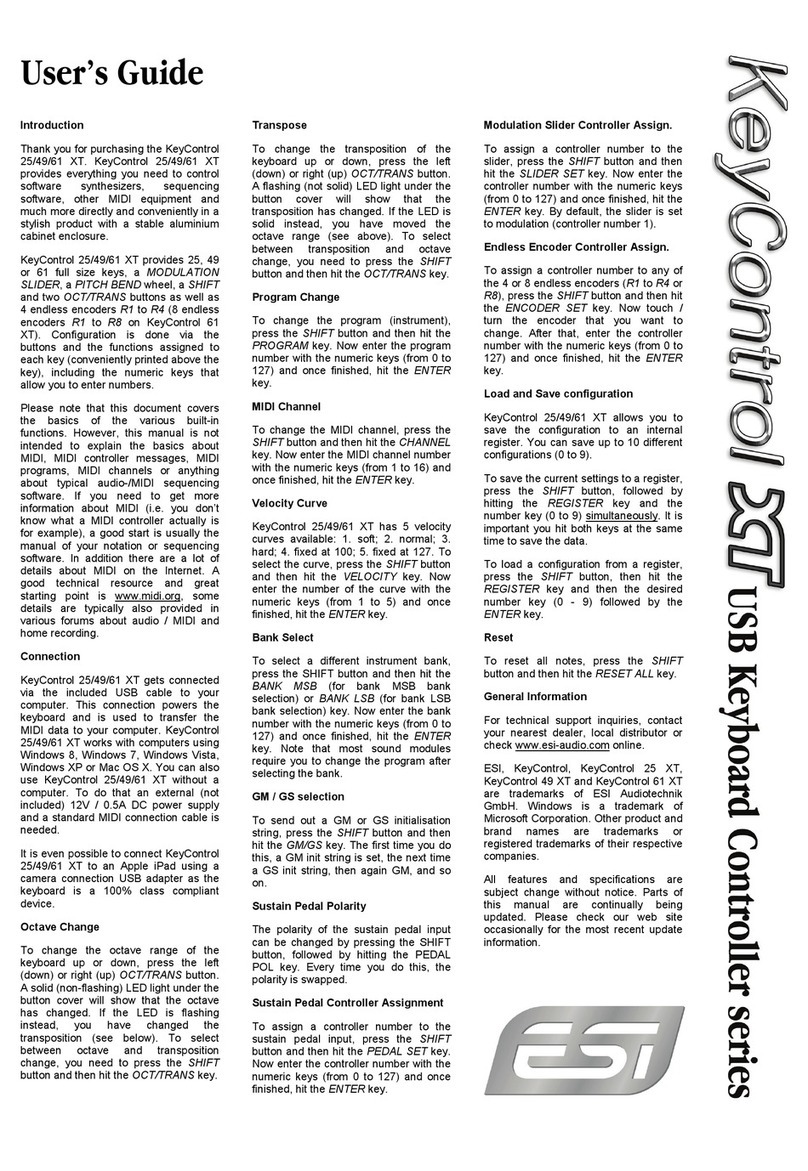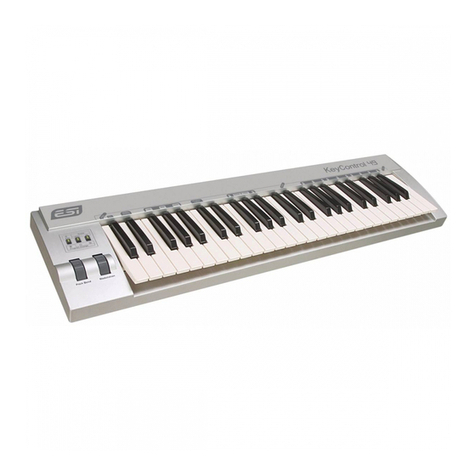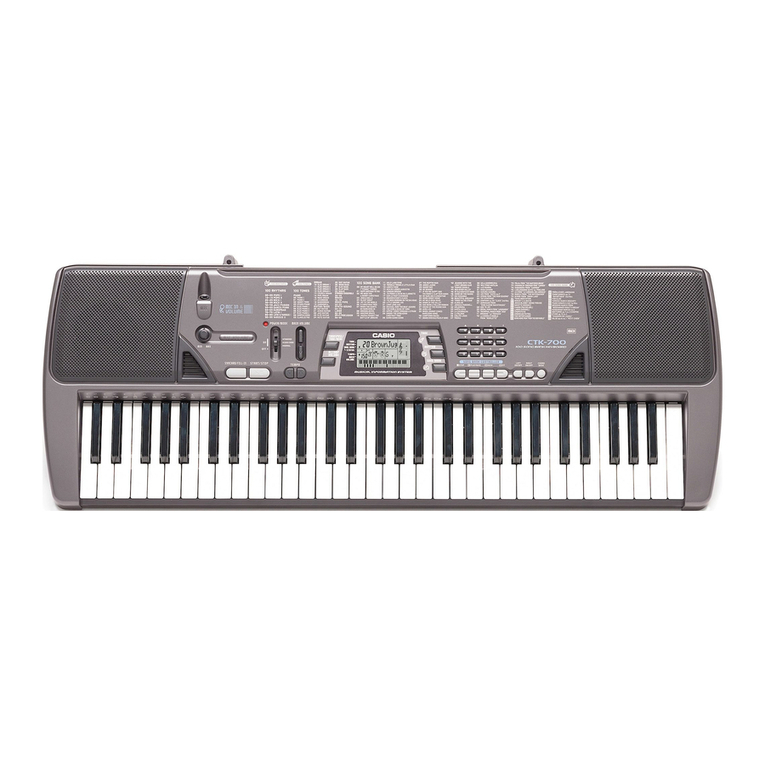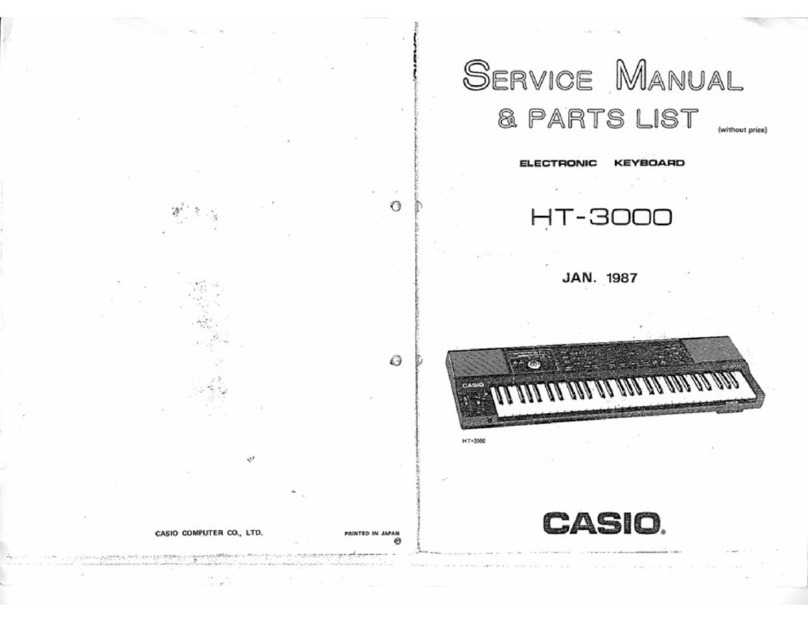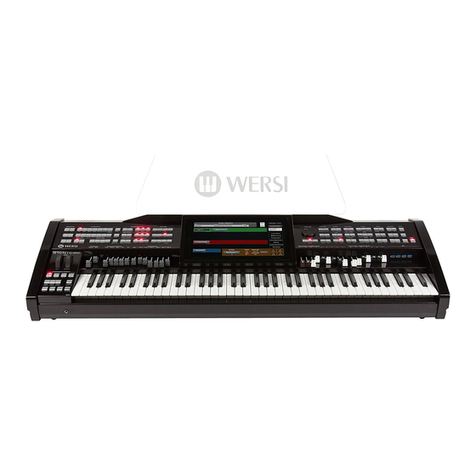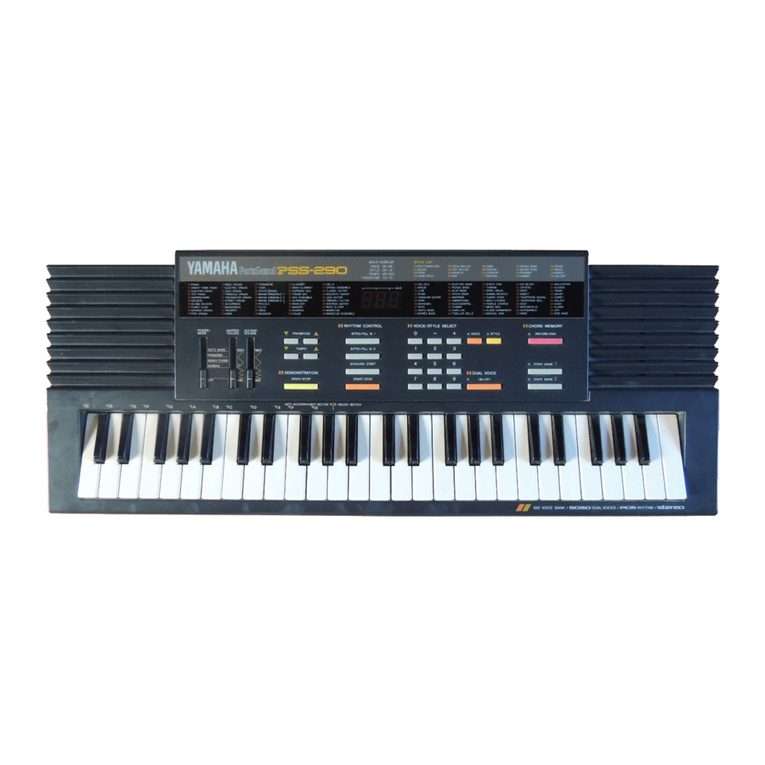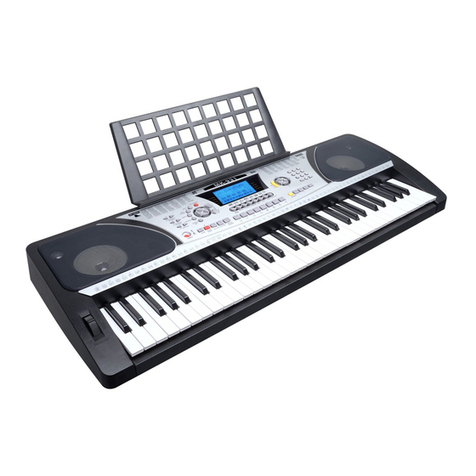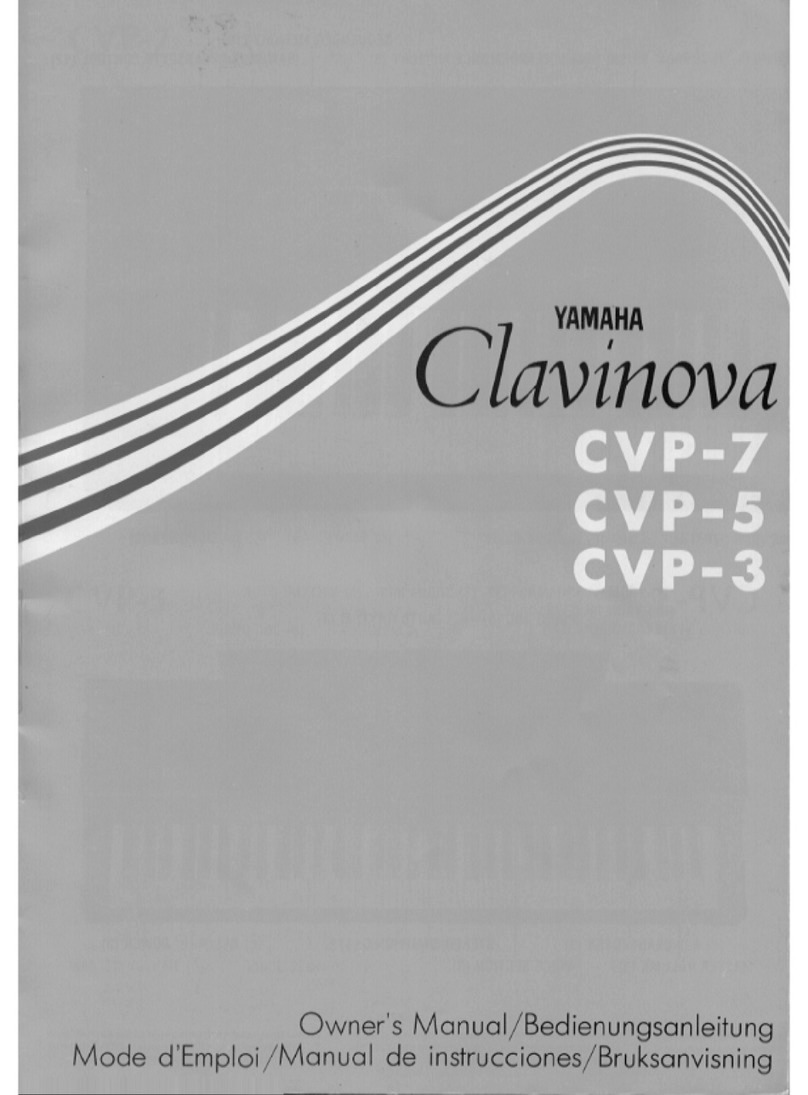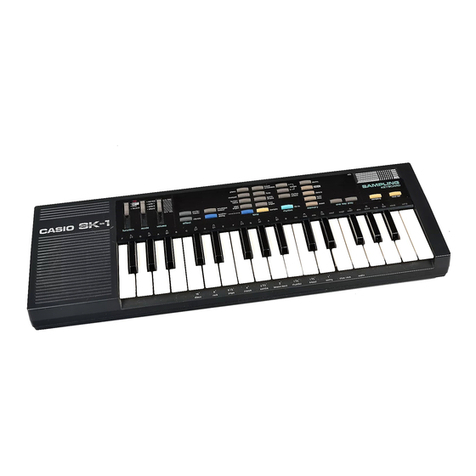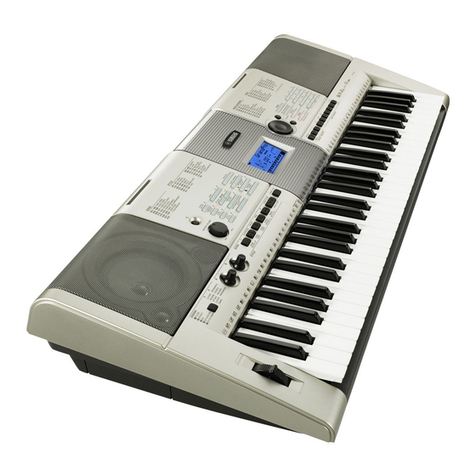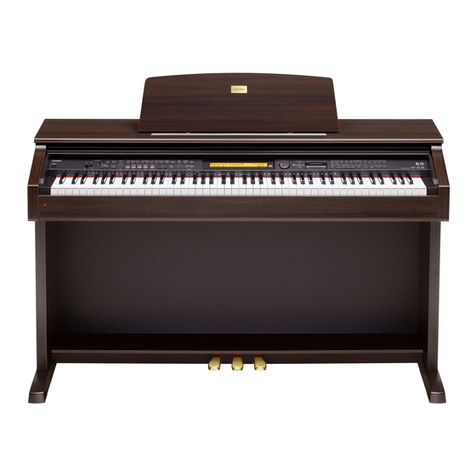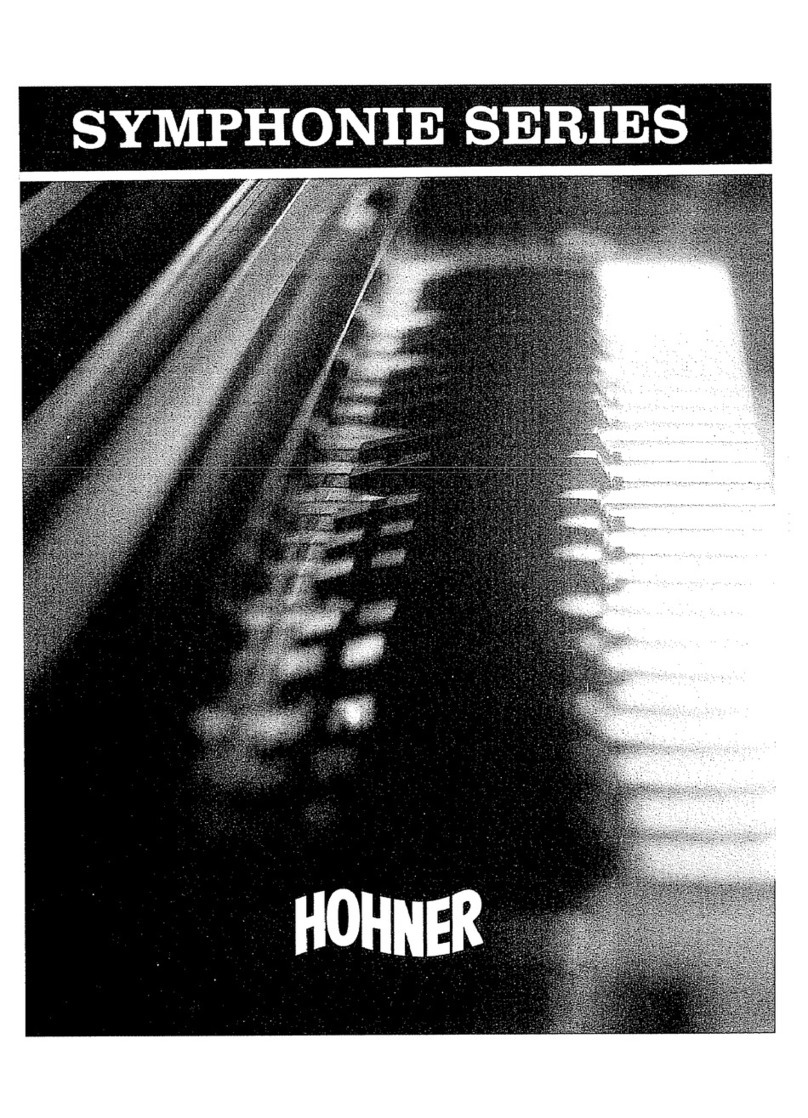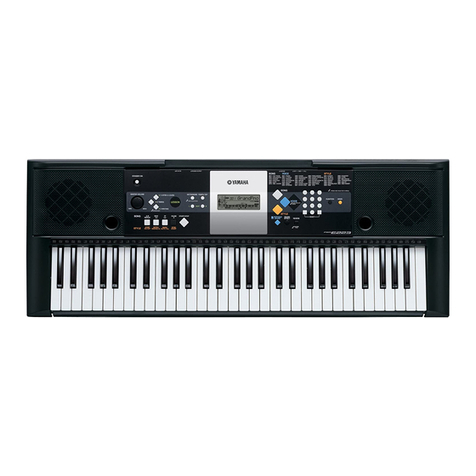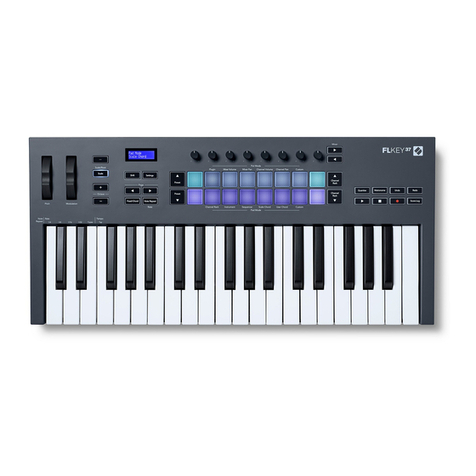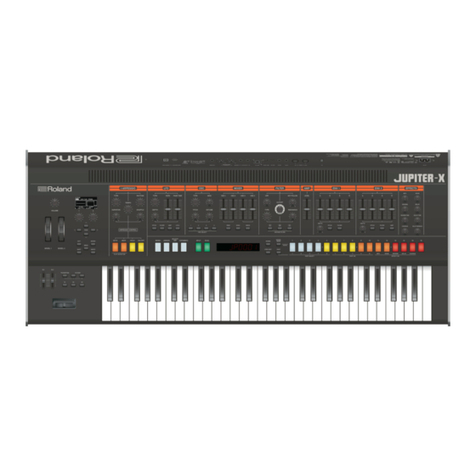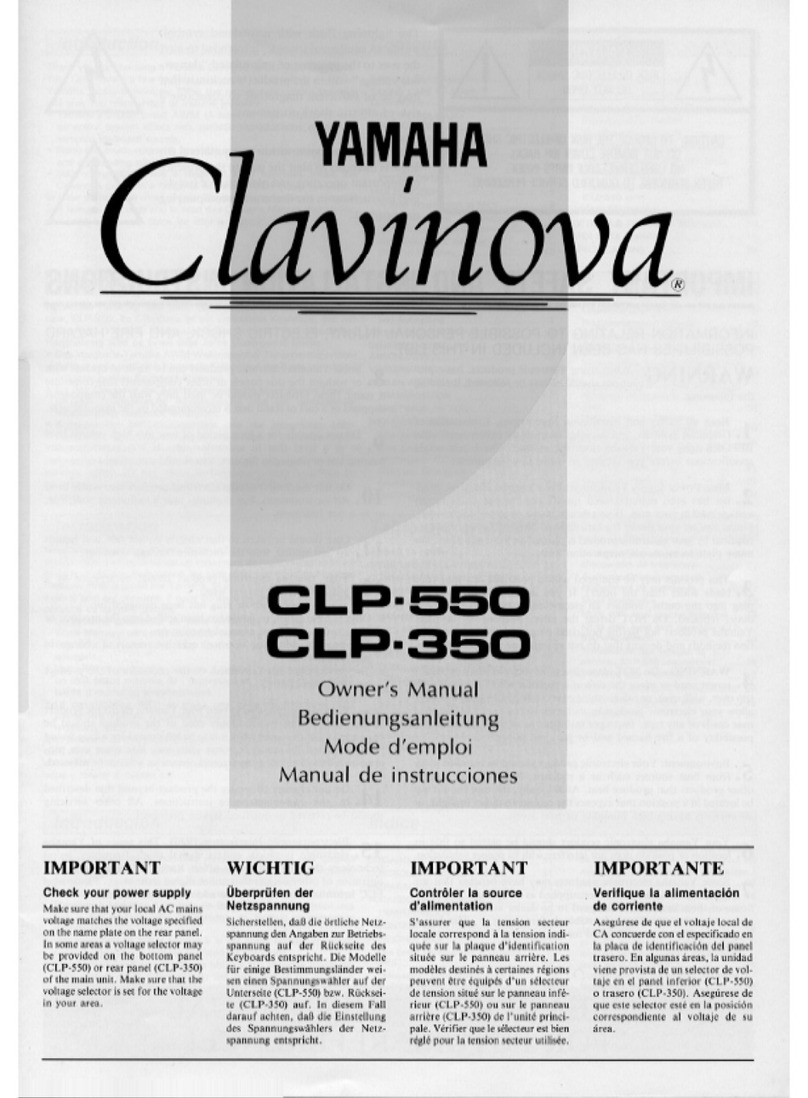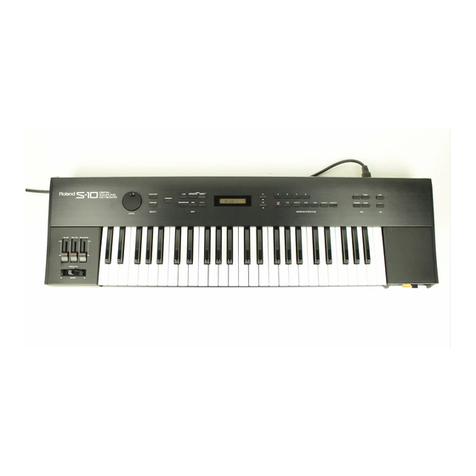ESI Miditerminal M4U User manual

ESI Miditerminal M4U
INDEX
END USER WARRANTY______________________________________________________________1
1. Introduction to Miditerminal M4U ____________________________________________________4
2. Description of Miditerminal M4U _____________________________________________________5
3. System Requirement________________________________________________________________7
1) PC____________________________________________________________________________7
2) Mac___________________________________________________________________________7
4. Installation _______________________________________________________________________8
1) Hardware Installation____________________________________________________________8
2) Exclusive driver Installation ______________________________________________________9
5. Setting in Applications _____________________________________________________________14
1) PC___________________________________________________________________________14
Cubase SX ____________________________________________________________________14
Logic _________________________________________________________________________15
Sonar_________________________________________________________________________16
2) Mac__________________________________________________________________________17
Cubase SX ____________________________________________________________________17
Nuendo _______________________________________________________________________19
Logic _________________________________________________________________________20
Reason _______________________________________________________________________21
All features and specifications subject to change without notice.
Third EditionAug. 2004
3

ESI Miditerminal M4U
1. Introduction to Miditerminal M4U
Thank you for choosing ESI Miditerminal M4U.
The M4U is a convenient 4 in 4 out, 64 channels, USB MIDI Interface for PC and Mac
computers. With the M4U you can obtain perfect MIDI timing and performance at an
extremely affordable price.
Features
- 4 In 4 Out MIDI (64 MIDI channels)
- perfect MIDI timing
- high-speed connection to USB-equipped PC or Macintosh computers
- MIDI-activity indicators for each port
- USB-powered; requires no external power supply
- compact 1/3 rack size
- exclusive MIDI driver for Windows XP, 2000, ME and 2003
- Mac OS X compatible
4

ESI Miditerminal M4U
2. Description of Miditerminal M4U
Front Panel
1 2 3 4 5 5 5 6
Rear Panel
6 6 6 5 7
1: USB/MIDI THRU switch
You select the operation mode here (USB or three kinds of MIDI Thru modes).
1) USB mode: When you select this mode, M4U will be working as a basic MIDI
interface. This is the normal operation mode. MIDI signals from your sequencer
applications will be sent out and can be recorded via the in and outputs of M4U.
As indication for this mode, the PWR/THRU LED will become red color. If you
push the button again, you can go to the THRU mode. If you want go back to
the normal USB mode, push the button again.
5

ESI Miditerminal M4U
2) THRU Mode 1: Input and Output ports will be matched by 1:1. For example,
the MIDI data from Input 2 directly goes to Output 2. All LEDs will be turned
on. After 2~3 seconds, LED will be turned off again. The PWR/THRU LED
will become green color.
3) THRU Mode 2: The MIDI data from Input 4 goes to Output 1~4. LED Display
Input 4 and Output 1~4 would be turned on. After 2~3 seconds, Output 1~4 will
be turned off (Input 4 remains turned on). Output LED will be lit by the signal.
The PWR/THRU LED will become green color.
4) THRU Mode 3: The MIDI data from Input 1 goes to Output 1~4. LED Display
Input 1 and Output 1~4 would be turned on. After 2~3 seconds, Output 1~4 will
be turned off (Input 1 remains turned on). Output LED will be lit by the signal.
The PWR/THRU LED will become green color.
* Three kinds of THRU modes are changed in sequence whenever the button is
pushed in.
Function LED signal display
Normal Basic MIDI interface
THRU 1 I/O port matching (1:1)
All LEDs will be turned on
After 2~3 seconds, LED will be turned off
again, flickering according to the signal.
THRU 2 In 4 -> All MIDI Outputs
In 4, Out 1~4 display will be turned on
After 2~3 seconds, Out 1~4 LED will be turn
off again (In 4 remains turned on), flickering
according to the signal.
THRU 3 In 1 -> All MIDI Outputs In 1, Out 1~4 display will be turned on
After 2~3 seconds, Out 1~4 LED will be turn
off again (In 1 remains turned on), flickering
according to the signal.
6

ESI Miditerminal M4U
2. PWR/THRU LED display
* Caution: THRU Mode only works when your computer is turned on.
Even though the PWR/THRU LED display is lit, M4U does not work when your
computer is turned off.
3. MIDI OUT LED display indicator
4. MIDI IN LED display indicator
5: MIDI IN 1, 2, 3, 4 ports
6: MIDI OUT 1, 2, 3, 4 ports
7. USB connector
3. System Requirement
1) PC
Windows XP, 2000, ME, 2003
- Intel Pentium III CPU or equivalent AMD CPU minimum
- Motherboard with Intel series chipsets or VIAchipsets recommended
- One available USB port
- More than 256MB of RAM
2) Mac
Mac OS 10.1 or higher only
- Macintosh with G3 or better processor (except the original PowerBook G3)
- One available USB port
- More than 256MB of RAM
* Caution
1. We don’t recommend using many other USB devices with the M4U via a USB
hub at the same time. It may cause Input data lose.
2. Some old mainboards that are using a OHCI (open host controller interface)
may cause problems.
3. Check our web site http://www.esi-pro.com occasionally for the most recent
update information or technical issues.
7

ESI Miditerminal M4U
4. Installation
1) Hardware Installation
Before you begin, make sure you have read your computer’s manual on installing USB
devices. Your computer’s manual should describe the precautions you should take.
Shutting down computer wouldn’t need for installing an USB device to the computer.
However, we will take it from the start to make sure you can follow every detail of
installation.
1. Find the USB port on your computer. The USB port looks like shown below. You can
usually find it close to the PS/2 or serial ports on the back of a desktop computer system.
USB port on computer
2. Plug in the appropriate plug of the USB cable (so-called Series A plug) to the USB
port of computer. You will notice that USB ports on computer and M4U are different.
Series A plug
3. Connect the other end of the USB cable (the Series B plug) to the USB port of M4U.
Series B plug
Turn on the computer. You will see that the LED displays of M4U are lit. The M4U get
the power from the computer via USB cable so you don’t need to attach any external
power supply.
8

ESI Miditerminal M4U
Series A Plug is used for those devices on which the external cable is permanently
attached like Mouse, Keyboard and USB hubs, etc.
Series B Plug is for devices that require detachable external cables and so is used for
devices like Printers, Scanners, Modems, Stand alone Hubs.
2) Exclusive driver Installation
1. Windows XP/2003
Just plug the USB device, and Insert ESI installation CD into your CD-Rom drive.
Go to ESI folder -> M4U folder
And run M4U.exe.
2. Windows 2000/ME
Don't plug the USB device before install the driver.
Otherwise, your system will be automatically rebooted.
1) Unplug the USB device from your system.
2) Run M4U.exe from your ESI Installation CD.
And click ‘Yes’follow the instructions.
9

ESI Miditerminal M4U
With Windows 2000 and XP installations, a message might appear stating “The
software has not passed Windows Logo testing to verify its compatibility with Windows
XP.” Though the message appeared, the driver is completely tested and verified by ESI
and is safe to use. You can ignore the message and just click ‘Yes’.
10

ESI Miditerminal M4U
3) After finishing the driver installation, plug the USB device to your computer.
In the case of Windows 2000, you may see this message again. Simply ignore the
message and just click ‘Yes’.
11

ESI Miditerminal M4U
4) Go to ‘My computer-> Control Panel -> Sounds and multimedia Properties -> Audio
-> MIDI tab. Select M4U as your playback device.
12

ESI Miditerminal M4U
3. Mac OS X
In Mac OS 10.1 or later, you can check if your M4U is recognized properly by using the
Audio MIDI Setup application in Applications/Utilities folder. Launch the Audio MIDI
Setup application and click the MIDI Devices tab on the Audio MIDI Setup window. If
the M4U is recognized properly, the ESI-M4U icon will appear on the window.
13

ESI Miditerminal M4U
5. Setting in Applications
* This chapter only contains the basic setup for some of the software. For more
detailed info, please refer to the manual of the software.
1) PC
Cubase SX
In Cubase, set input and output as M4U MIDI.
See red circle of below picture.
14

ESI Miditerminal M4U
Logic
In Logic, you can choose a port for a MIDI track in the instrument parameter box in
Arrange Window.
In addition, go to ‘Synchronisation’ -> ‘MIDI’ and uncheck ‘Transmit MIDI clock’ for
better performance.
15

ESI Miditerminal M4U
Sonar
After launching Sonar, Go to Option -> MIDI devices setting and Select USB Audio
Device.
16

ESI Miditerminal M4U
2) Mac
As long as the M4U is recognized by Mac OS X with no problem, all the applications
that support CoreMIDI should work fine with the M4U. Here are some examples of
how to change application settings for using the M4U.
Cubase SX
In Cubase, expand the MIDI section in the Inspector by clicking its tab.
17

ESI Miditerminal M4U
In this section, you can choose a port (or all ports) for MIDI input.
In addition, you can choose a port for MIDI output.
18

ESI Miditerminal M4U
Nuendo
In Nuendo, you can choose a port for a MIDI track in the Track List area.
19

ESI Miditerminal M4U
Logic
In Logic, you can choose a port for a MIDI track in the instrument parameter box in
Arrange Window.
20

ESI Miditerminal M4U
Reason
In Reason, open the Preferences window and you can choose a port for MIDI input in
the MIDI Page.
* Parts of this manual are continually being updated. Please check our web site
www.esi-pro.com occasionally for the most recent update information.
21
Other manuals for Miditerminal M4U
1
Table of contents
Other ESI Electronic Keyboard manuals
